1920 Maasdam III
The ss Maasdam (III)
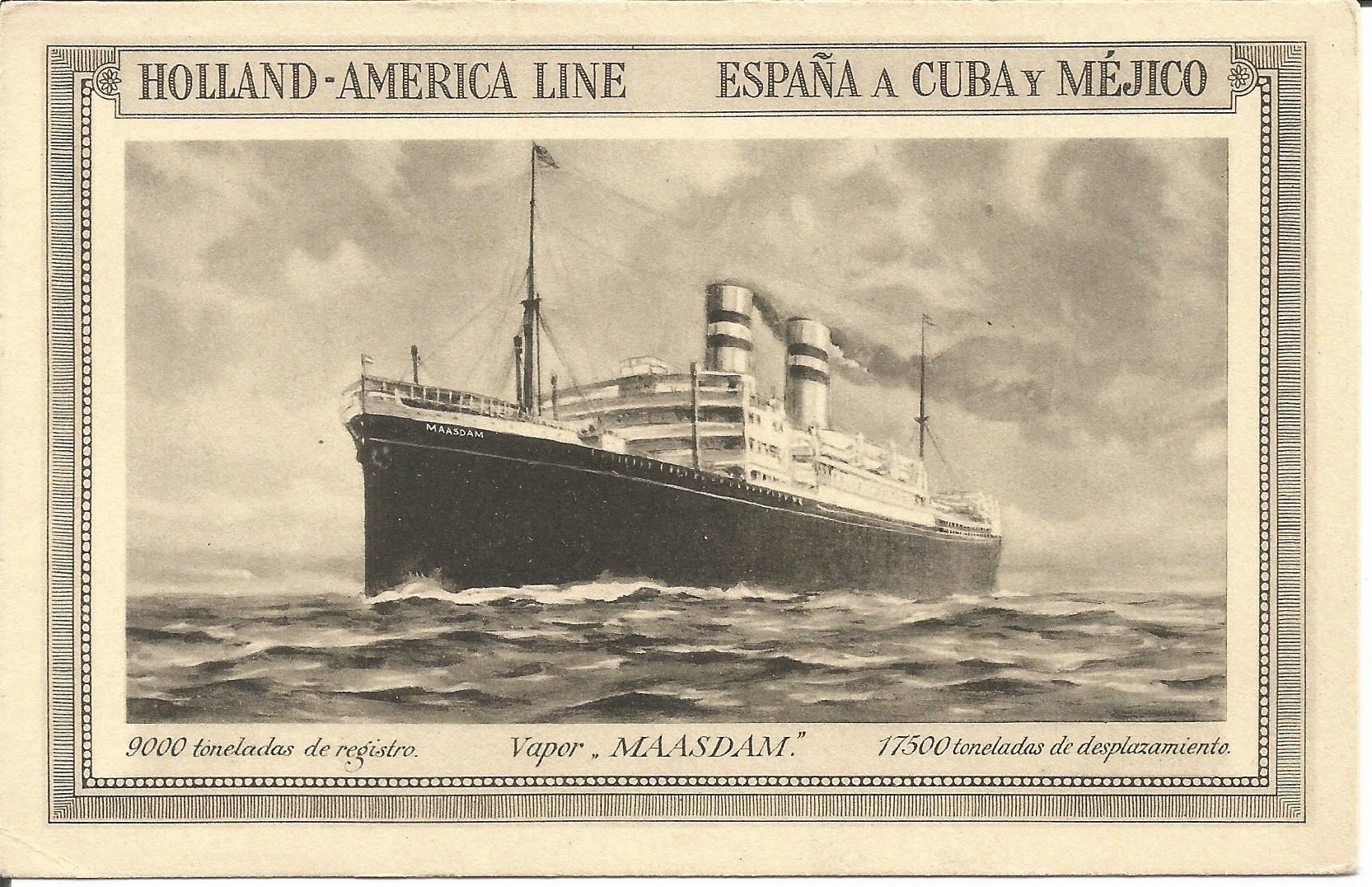
The ss Maasdam (III) together with her sisters were constructed as passenger cargo vessels for the service to Middle America. This postcard is in Spanish as the company tried to attract passengers from Spain and Portugal.
TONN. BRT: 8,811.54 NRT: 5,417.19 DWT: 11,640
BUILT AT: N.V. Maatschappij voor Scheeps- en Werktuigbouw “Feijenoord”, Rotterdam, the Netherlands.
BUILT IN: 1920 YARDNO: 289
ENGINES: One set of double reduction geared Brown-Curtiss steam turbines by John Brown & Company, Glasgow, Scotland
ENGINE OUTPUT: 4,200 Shp. PROPS: One (fixed)
SERVICE SPD: 13 Knots MAX. SPEED:
LENGTH.O.A: 141.98 Meters LENGTH B.P.: 137.16 Meters
BEAM OA: 17.68 Meters DEPTH: 12.19 Meters
DRAFT: .
PAX.CAP: 14 First Class, 174 Second Class, 802 Third Class
CREW: 89
SISTERSHIPS: Edam IV), Leerdam (II), Spaarndam (II)
REMARKS: Bunker capacity 1820 tons of oil.
——————————————————————
HISTORY:
Constructed of steel with two full decks. The ship had been laid down as a freighter of the Gaasterdijk class but because of to the proposed new route to Cuba and Mexico the hull was completed as a combination cargo and passenger vessel.
Due to the sinking of the ss Statendam (II) / Justicia as troopship under British flag, Holland America had received 60.000 tons of steel and a large number steam turbine sets and these were now used to built a number of cargo ships. With an eye on the summer labor trade to Cuba, a rather basic passenger accommodation was added. Although classified as passengerships, the four sisters were equipped with only 1 propellor for propulsion while by this time two screws for passengerships were the norm to ensure redundancy and to make higher speeds possible.
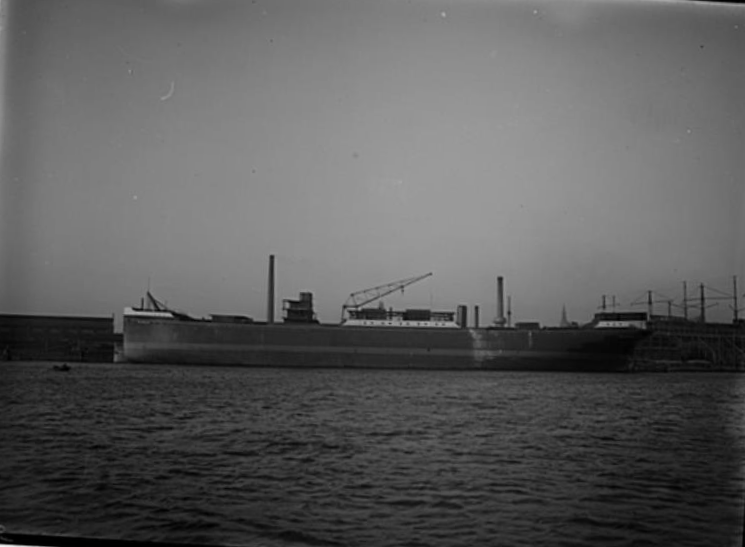
The Maasdam (III) shortly after the launch. This side view clearly indicates her cargo design with only a small middle superstructure and a standard cargo bow and stern.
The ship was launched on 21 October 1920 and delivered on 6 August 1921. Upon delivery she sported two funnels. Only one was in use, the 2nd one being a dummy or fake one. This 2nd funnel had been added for a better profile but also because many 3rd class emigrants and travellers thought that “the more funnels, the safer the ship”.
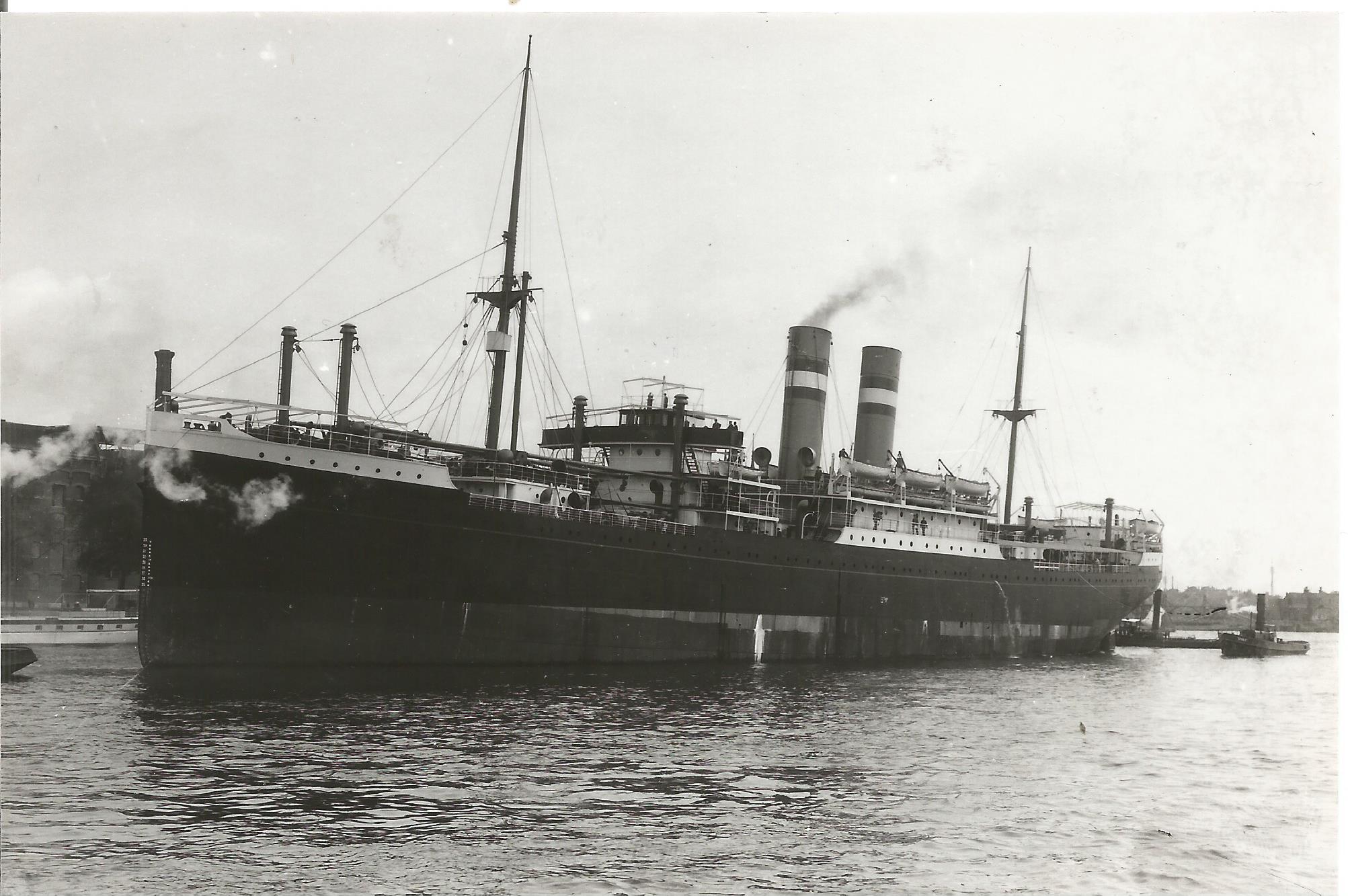
The ss Maasdam (III) as she came in service with two funnels
Commenced the maiden voyage on 7 September 1921 sailing from Rotterdam – via Antwerp,- Coruna – Vigo- to Havana – Vera Cruz – Tampico and New Orleans. From there the ship returned to Havana, and sailed via Vigo and Coruna to Rotterdam. The roundtrip taking 2 months. The ship also called on occasion at Boulogne Sur Mer, Gyon, Santiago de Compostella – Bilbao – Teneriffe, Las Palmas and other ports. The focus point was on transporting Spanish and Portugese laborers who were travelling to Cuba and Central America for the sugar cane harvest.
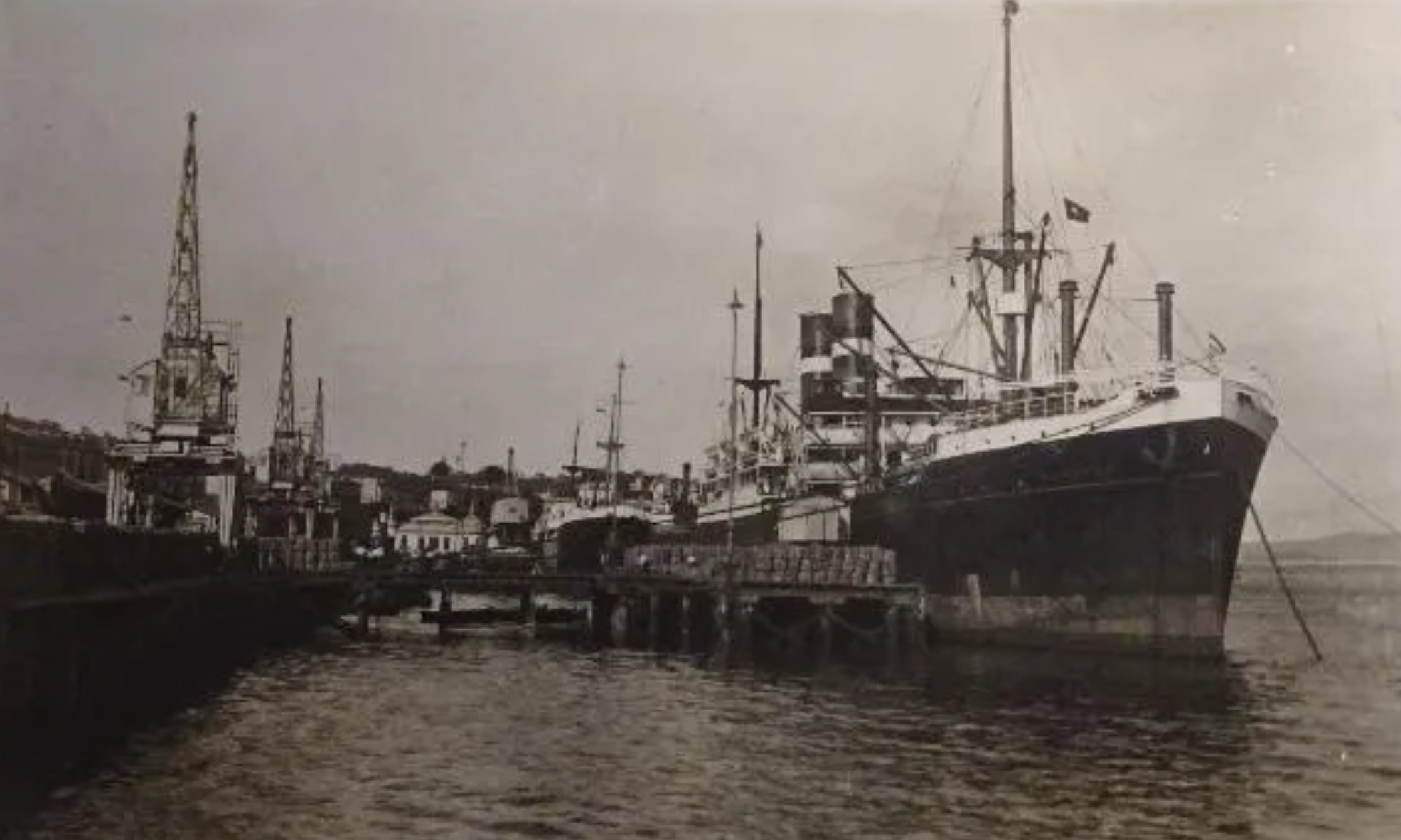
This photo shows the ship docked in the Spanish port of Santander. The portside anchor is deployed to it can pull the bow away from the pier on departure. The captain could manuver the stern by means of using propellor and rudder.
In 1928 the accommodation lay-out is changed to 14 First Class and 950 Third Class. The 2nd class, which had been especially configured for the foremen/supervisors of the laborers, was removed as nobody used it and in the free coming space more dormitory style bunks were installed.
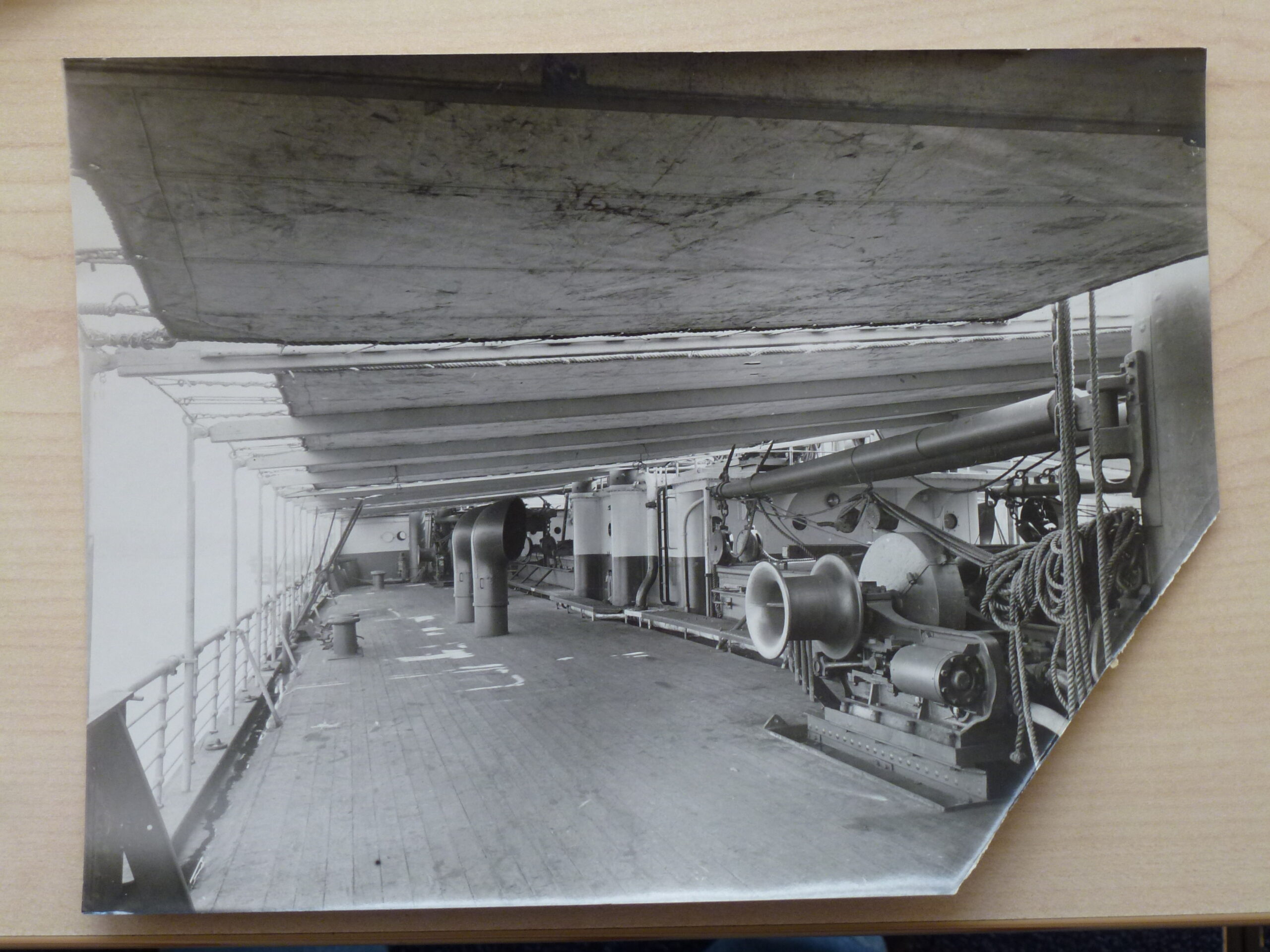
This rather damaged photo shows the “Promenade Deck” for the passengers. As one can see there is not much luxury. Canvas coveed awnings are in use to protect those on board from the fierce sunshine on the tropical route.
The ship had a fairly un-eventful service and was laid up in 1993 due to the depression. In 1934 shew as sent for a refit at the yard of P. Smit Jr. in Rotterdam. As the company had decided not to return to the middle America service via the Iberian Peninsula, most of the passenger accommodation was removed. The capacity now became 30 Cabin class and 60 Third class with a crew of 48. The dummy funnel was removed. The ship returned to service on 14 February 1935 and is palced on the route Rotterdam to New York with calls at the various ports on the North Eastern US coast. Ports of call include Boston, Philadelphia, Baltimore, Norfolk, aAlbany, Chester, Newark and New York.
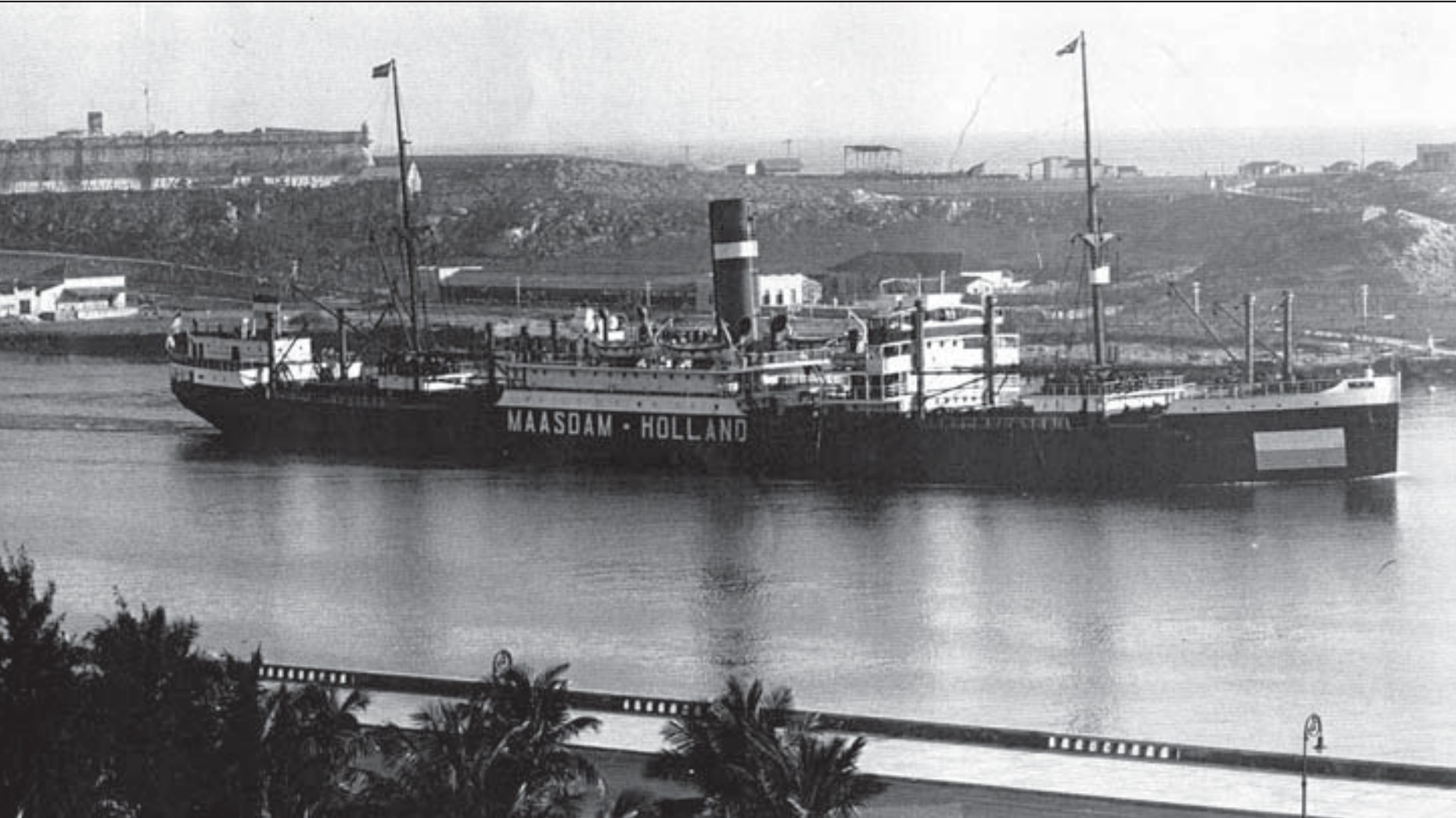
This photo shows the ship after its refit and it now only has one funnel. The letters and flag on the hull indciate that this photo was taken between September 1939 and May 1940, when the Second World War was already raging but the Netherlands were still neutral.
In 1939 and early 1940 she makes a number of voyages back to Cuba, Mexico and the US Gulf of Mexico ports. In September 1939 the 2nd World War breaks out but the Netherlands is still neutral so the ship continues sailing on its normal routes. But it is not exempt from the war influence and in Febr. 1940 it saves the crew (27 of them) of the finnish ship “Wilja”.
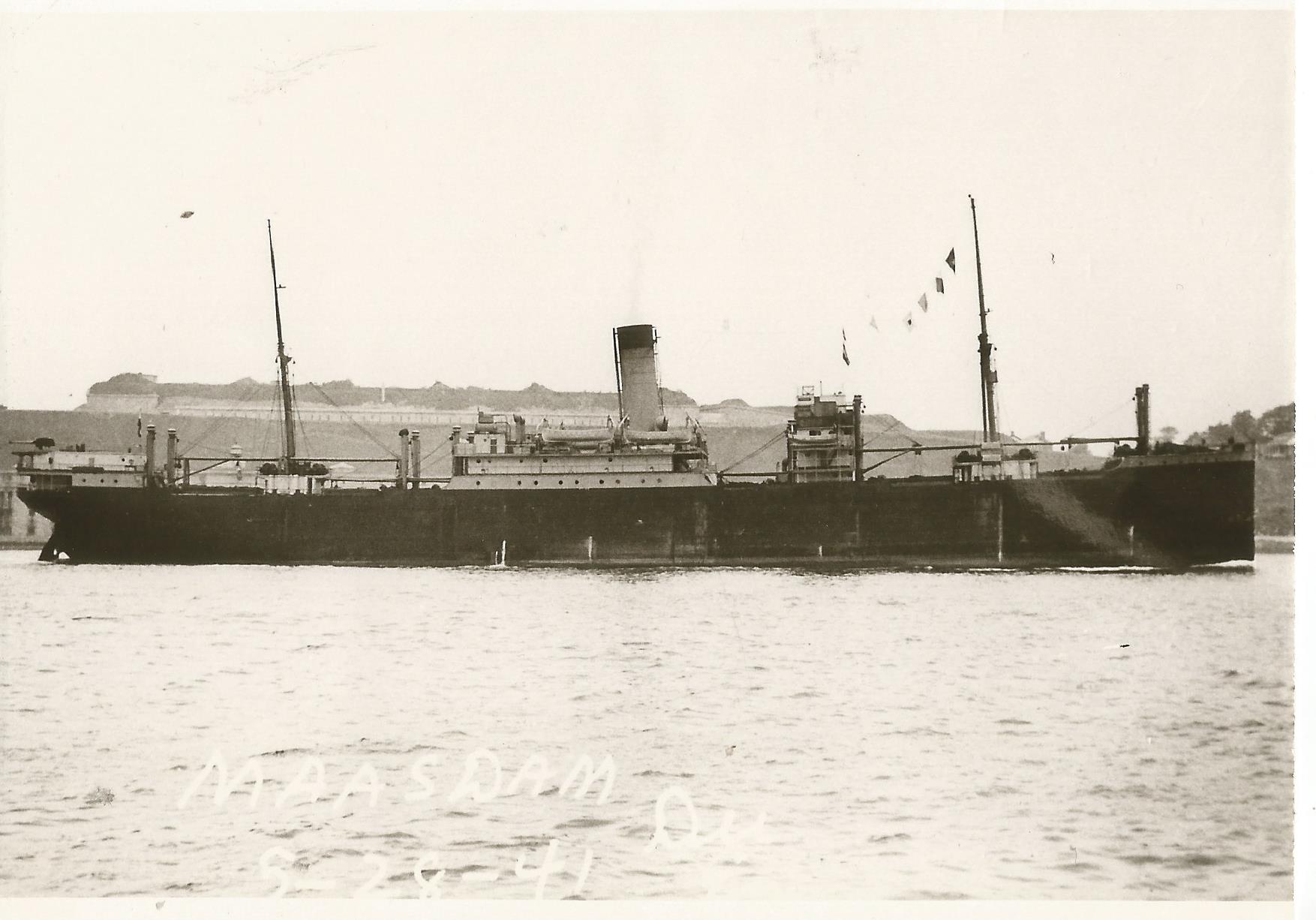
The only known war photo of the ship. As she was sunk so early in the war, there no photos out there that show her painted in proper battleship grey.
In April 1940 she is on a return voyage to Rotterdam and docks on 02 May in London. She remains in this port due to the developing situation in Europe and as soon asThe Netherlands gets invovled in the war, the ship is seized by the Dutch Government and chartered out to the British Ministry of War Transport. She is painted grey and in service for the allied war effort as a cargo ship with some passenger accommodation. She is from then on engaged on voyages between New York – Halifax (to join the Eastbound North Atlantic convoys) – and Liverpool. Before returning to New York, the ship would call at various ports around England and Scotland to load or deliver cargo.
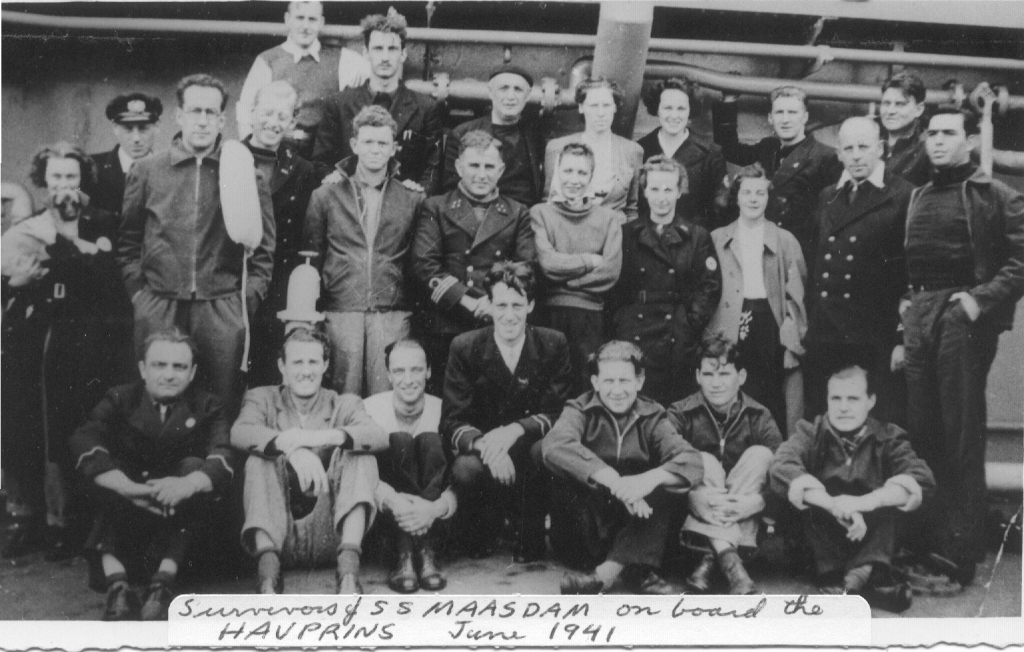
Some of the survivors of the ss Maasdam sinking. Among the men 7 of the 11 nurses who survived the disaster are visible. Top left with cap, Captain Boschoff Sr.. the man in the middle with the 3 stripes is the Chief officer.
On 11 June 1941 the ship leaves New York in convoy HX 133 bound for Great Britain. On 26 June 1941 a torpedo from the German Submarine U 564 hits home. The ship is not fatally damaged but when the ship next to it (the ms Malaya of the Danish East Asiatic company) explodes it causes so much damage that the ship sinks in position 59.56o North, 030.35o West There are two fatal casualties, both nurses who were on their way to Europe and who fell out of the lowered lifeboat and drowned. The crew and other occupants were picked up by the Norwegian tanker “Havpprins” and later landed in the British port of Avonmouth. These nurses were from the Red Cross nurses and went to their American hospital in England and the 11 (with their colleagues who have come over with another ship) were later received by Winston Churchill on 15 July 1941. The Holland America Line crew was transferred and signed on, on other HAL ships.
It is a small world when at sea and Captain Boschoff met in February 1955 one of the nurses who had survived the sinking. Now he was captain of the ss Ryndam (II) and Mrs. Ruth Martin was a passenger who had joined in Southampton. The captain decided that this “reunion” should be celebrated and the result was the photo below.
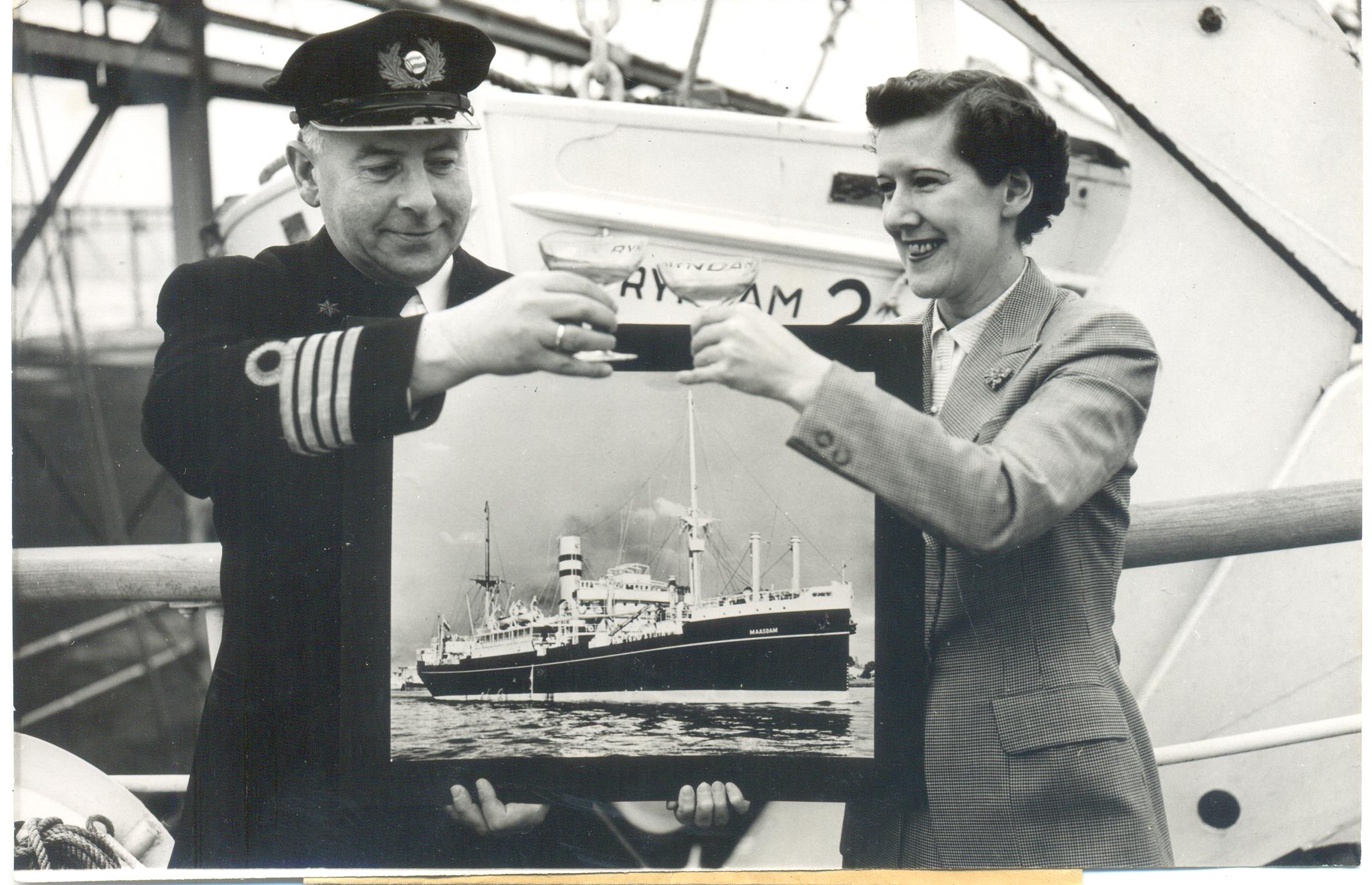
between 12 and 18 February 1955. Captain J.P Boschoff Sr. ex Maasdam (III) and now Ryndam (II) with ex nurse Mrs. Ruth Martin. The photo was taken when the Ryndam (II) came close to the final resting place of the Maasdam (III). This was on voyage 45 and the captain reired at the end of this voyage on 19 March.
Captains:
Sievert de Jong 01 Aug. 1922 – 17 Jul 1922.
Reinier Brauen 01 Aug.1922 – 23 May. 1924
Antonie Jochems 03 Jun. 1924 – 08 Nov. 1924 (2 relieve voyages)
Jacobus de Koning 12 Nov. 1924 – 25 Apr. 1925
Johannes v. Dulken 01 May. 1925 – 02 Jan. 1926
Cornelis Coster 06 Jan. 1926- 12 Sep. 1926
Reinier Braun 17 Sep. 1926 – 13 Dec. 1928
Corneles Tirion 25 Jan. 1929 – 08 mar. 1929 (relief voyage)
Cornelis de Korver 12 Mar. 1929 – 23 April 1930
Lamburtus Rijnink 04 Jun. 1930 – 05 Dec. 1930
No Captain Ship laid up due to the depression
Cornelis de Korver 10 May. 1931 – 28 Feb. 1932
Willem v. Hemert 22 May 1932 – 23 21 May 1932
Pieter Lagaay Sr. 26 May 1932 – 25 nov. 1932
No Captain Ship laid up due to the depression
Cornelis v. Beek 24 Mar. 1933 – 27 Jul. 1933
No Captain Ship laid up due to depression and refit.
Cornelis Kleyn 01 Feb. 1935 – 20 Apr. 1935
Arie Kooy 12 Jul. 1935 – 19 Dec. 1935
Cornelis Coster 03 Jan. 1936 – 24 Feb. 1936
Arie Kooy 28 Mar. 1936 – 21 Mar. 1937
Siebe Vlietstra 23 Mar. 1937 – 18 Jul. 1938
Theunis Stuut 30 Jul. 1938 – 04 Sept. 1938
Cornelis van Beek 10 Sep. 1938 – 22 Oct. 1938
Cornelis v. Buuren 26 Oct. 1938 – end date unknown.
Willem van Hemert 07 Feb. 1940 – 02 nov. 1940
Captain unknown 02 Nov. 1940 – 21 Jan. 1941
Jan Boschoff Sr. 21 Jan. 1941 – 26 Jun. 1941
Sources:
a. Captain Alberts Ship database and photo collection.
b. Stamboek & Mouvementen boeken HAL as held by the Municiple archive of the City of Roterdam
c. contemporary newspapers (www. delpher.nl)
d. 2nd world ware Personell cards held by Holland America and the Dutch Government.
